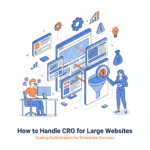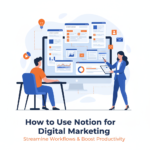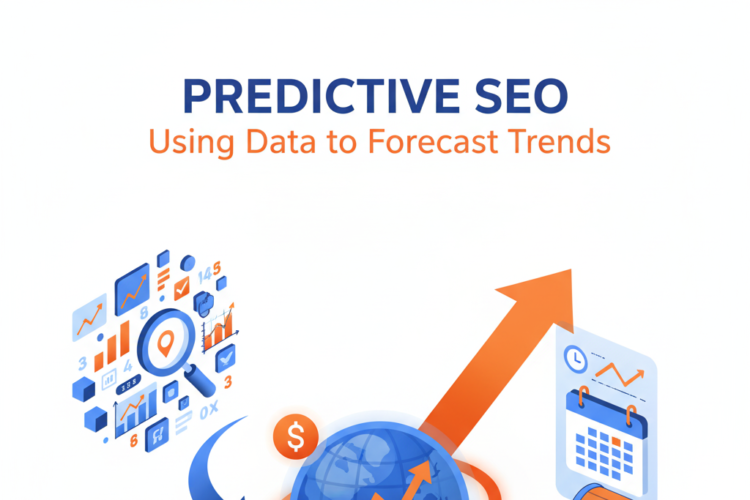
From SEO to GEO: How Can Marketers Adapt to the New Era of Search Visibility?
Introduction: The Search Evolution Has Begun
For over two decades, Search Engine Optimization (SEO) has been the bedrock of digital marketing. Marketers optimized web pages for algorithms, built backlinks, and crafted keyword-rich content to appear on Google’s coveted first page.
But in 2025 and beyond, the search landscape is undergoing its most dramatic shift yet — the rise of Generative Engine Optimization (GEO).
With the rise of AI-powered search experiences like Google’s Search Generative Experience (SGE), Microsoft’s Copilot, ChatGPT’s Browse, and Perplexity AI, users no longer browse 10 blue links. Instead, they engage with AI-generated answers synthesized from multiple sources.
This change demands a new marketing mindset. GEO represents a paradigm shift — optimizing not for traditional algorithms, but for AI systems that generate responses, summarize content, and influence user choices directly within the chat or SERP interface.
SEO vs. GEO: Understanding the Core Difference
| Factor | Traditional SEO | Generative Engine Optimization (GEO) |
|---|---|---|
| Goal | Rank pages high in search results | Get content cited or surfaced in AI-generated responses |
| User Interaction | Click-through to websites | Direct answers within chat or AI search |
| Optimization Target | Search engine algorithms | Generative models and retrieval systems |
| Primary Focus | Keywords, backlinks, technical SEO | Content structure, semantic richness, factual trust, and source reliability |
| Output Format | Webpages and snippets | AI summaries, citations, and conversational responses |
In GEO, your content might not generate traffic directly — but it will influence visibility and brand authority across AI-generated ecosystems.
Why GEO Matters Now
-
Generative Search Is Growing Fast
Google’s SGE and AI Overviews already appear in over 60% of queries in beta tests. Tools like Perplexity AI, ChatGPT, and You.com are capturing millions of search sessions daily. -
Users Trust AI Summaries
People increasingly rely on synthesized responses, reducing the need to “click through” to multiple websites. -
Visibility Shifts to Contextual Mentions
Being cited, summarized, or referenced by generative engines becomes the new equivalent of “ranking on Page 1.” -
Zero-Click Search Era Intensifies
GEO ensures your brand is part of that zero-click conversation — even if users don’t visit your site.
How Generative Search Engines Work
To understand GEO, marketers need to grasp how AI-powered search systems operate:
-
Retrieval Phase (RAG Systems)
The AI fetches relevant documents using traditional search (vector databases, embeddings). -
Generation Phase
The model synthesizes a natural-language answer based on retrieved information. -
Attribution Phase
Some engines cite or link to original sources (Perplexity, Bing Copilot), while others summarize without attribution. -
Feedback Loop
User engagement (clicks, dwell time, likes) trains the system further, influencing what content gets retrieved next time.
In short: GEO is about ensuring your content is retrievable, trustable, and usable within AI responses.
Core Pillars of GEO (Generative Engine Optimization)
Let’s break down the core principles that define GEO success.
1. Semantic Optimization > Keyword Optimization
Traditional SEO focuses on keyword density and intent-based targeting.
GEO focuses on semantic depth — how comprehensively your content covers a topic.
Action Steps:
-
Use topic clusters and entity-based content structures.
-
Include contextually related subtopics, FAQs, and concept relationships.
-
Use schema markup to strengthen meaning.
Example:
Instead of just targeting “best protein powders”, create a content hub covering:
-
“Types of protein powders”
-
“Whey vs. plant protein comparison”
-
“How to choose protein powder by fitness goals”
The goal: make your content the most semantically complete reference, so AI systems retrieve it for summarization.
2. Authoritativeness & Source Trust
Generative engines heavily prioritize trustworthy and verifiable sources to minimize hallucinations.
Action Steps:
-
Strengthen E-E-A-T (Experience, Expertise, Authoritativeness, Trustworthiness).
-
Use verifiable claims, citations, and original research.
-
Highlight author bios, credentials, and data transparency.
-
Build digital authority through mentions, backlinks, and consistent brand footprint.
Example:
Healthline, WebMD, and Mayo Clinic are frequently cited in AI summaries due to their trusted domain authority and factual reliability.
3. Structured and Machine-Readable Data
AI systems prefer content that’s easily parsable.
Schema markup, metadata, and JSON-LD are not just SEO signals anymore — they’re AI comprehension enhancers.
Action Steps:
-
Implement schema for articles, FAQs, products, and reviews.
-
Use descriptive titles and headings that clearly outline hierarchies.
-
Add alt text that conveys context, not just keywords.
Example:
If your article has FAQ schema, AI engines can use those questions directly in conversational answers.
4. Content Format Diversity
Generative systems don’t just rely on text. They analyze images, videos, podcasts, and transcripts.
Action Steps:
-
Create multimodal content: visuals, infographics, how-to videos.
-
Use AI-readable captions and structured metadata.
-
Provide transcripts for all audio and video assets.
The more formats your content appears in, the higher its retrievability across generative platforms.
5. Prompt Alignment
Generative search often mirrors how people ask questions conversationally — through prompts.
Action Steps:
-
Research natural-language queries and questions.
-
Create Q&A style content that answers these prompts.
-
Use conversational tone to align with AI interpretation models.
Example:
Instead of a post titled “CRO Techniques for E-commerce”, use “How can e-commerce brands increase conversions using CRO principles?”
This makes your content more compatible with user prompts and AI summarization logic.
6. Brand Mentions in Generative Contexts
Unlike SEO, GEO success doesn’t always require clicks. Even being mentioned in AI responses boosts brand visibility.
Action Steps:
-
Publish authoritative thought leadership content.
-
Get quoted in high-authority publications.
-
Collaborate with data-backed reports that AI models might use for training or retrieval.
Over time, your brand becomes part of the “knowledge graph” that AI engines pull from.
7. Content Freshness and Updating
AI models rely on up-to-date data to maintain relevance.
Consistent updates signal reliability.
Action Steps:
-
Refresh high-performing content quarterly.
-
Add recent statistics and trends.
-
Use structured timestamps to signal recency.
GEO Optimization Workflow (Step-by-Step)
-
Identify High-Value Queries
-
Use tools like Perplexity, ChatGPT, or SGE to see how AI answers your key topics.
-
Note which sites get cited or mentioned.
-
-
Audit Content for Generative Readiness
-
Is it factual, structured, and semantically rich?
-
Does it have clear author attribution and schema?
-
-
Enhance Contextual Coverage
-
Expand into related entities and supporting questions.
-
-
Monitor Generative Visibility
-
Track where your brand appears in AI summaries using tools like Glimpse, NeuronWriter, or Surfer AI reports.
-
-
Iterate and Adapt
-
Update based on emerging generative behaviors and platform changes.
-
Case Study: How Brands Are Adapting
1. HubSpot
-
Expanded pillar pages to cover entire topic ecosystems.
-
Uses structured FAQs and data-driven blog posts.
-
Frequently cited in AI summaries for marketing queries.
2. Shopify
-
Built educational content around “how-to” ecommerce terms.
-
Deep integration of schema and structured metadata.
-
Appears in Google’s AI-generated overviews.
3. NerdWallet
-
Heavy investment in financial data accuracy and trust signals.
-
Clear author bios and transparent sourcing.
-
Prominently featured in AI-driven answers about personal finance.
Tools for GEO Optimization
-
Google Search Console + SGE Insights (when available)
-
ChatGPT Browse / Perplexity AI (for visibility audits)
-
Frase / Surfer SEO / NeuronWriter (semantic optimization)
-
Schema.org Generators (for structured data)
-
Brandwatch / Mention (for monitoring brand citations)
Challenges Ahead
-
Limited Transparency: AI engines don’t always disclose citation logic.
-
Zero-Click Visibility: You may gain brand exposure without measurable traffic.
-
Ethical & Legal Concerns: Content use in training or responses may raise copyright questions.
-
Data Volatility: Constant AI updates require agile content strategies.
The Future: Blending SEO + GEO
SEO isn’t dead — it’s evolving into GEO.
Marketers must master both — optimizing content for search engines and generative systems simultaneously.
Here’s how to integrate both worlds:
| SEO Focus | GEO Focus |
|---|---|
| Keywords & Links | Semantics & Entities |
| Ranking Pages | Being Cited in AI Responses |
| Technical Optimization | Data Structuring & Context Signals |
| Search Intent | Conversational Prompt Intent |
| Click-Throughs | Visibility in Generative Summaries |
Together, SEO and GEO form the foundation of the next era of digital visibility.
Conclusion: The New Marketing Mindset
The shift from SEO to GEO is more than a technological change — it’s a strategic evolution in how brands connect with audiences.
Instead of fighting for rank positions, marketers must now fight for influence within AI-generated ecosystems.
To thrive in this new era:
-
Think semantically, not just strategically.
-
Optimize for understanding, not just ranking.
-
Build trust, structure, and authority that AI systems recognize as truth.
GEO is not the end of SEO — it’s its next intelligent chapter.
Marketers who adapt early will dominate the future of search visibility.
Author



